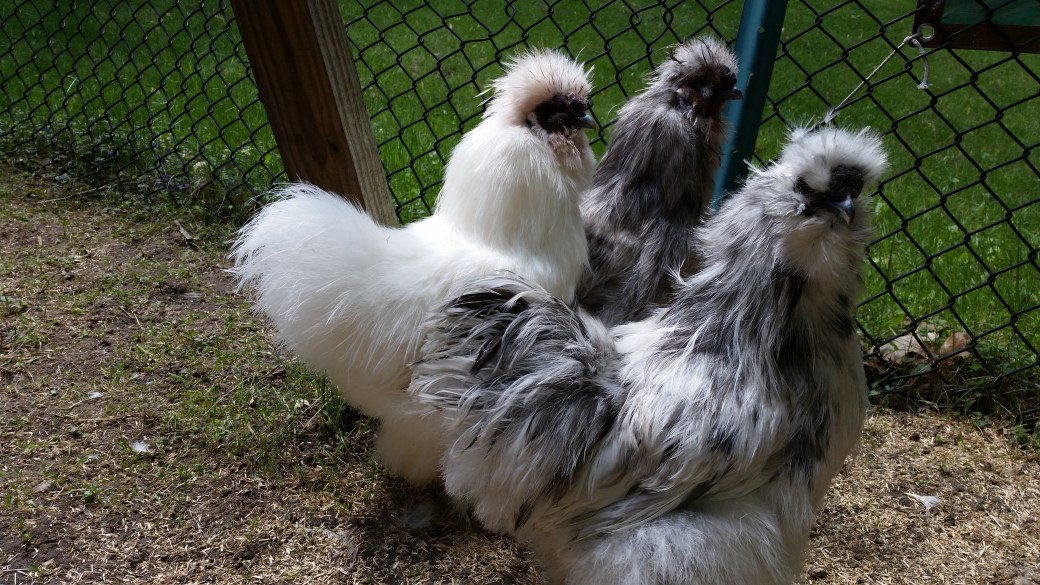 I have owned and bred silkie chickens exclusively for over thirteen years. I started out with a typical backyard flock that included an assortment of different breeds of chicken. I saw and read about silkies on the internet and was instantly obsessed with them. I started out by purchasing some through our local feed mill. I was thrilled with them and was anxious to purchase a few more. I did some research and bought some quality stock from a local breeder who specializes in silkies. She recommended starting with a Blue/Black/Splash pen because you will not need to keep the colors separated. They will always breed true to those three colors. From there I branched out and now breed seven different colors of silkies.
I have owned and bred silkie chickens exclusively for over thirteen years. I started out with a typical backyard flock that included an assortment of different breeds of chicken. I saw and read about silkies on the internet and was instantly obsessed with them. I started out by purchasing some through our local feed mill. I was thrilled with them and was anxious to purchase a few more. I did some research and bought some quality stock from a local breeder who specializes in silkies. She recommended starting with a Blue/Black/Splash pen because you will not need to keep the colors separated. They will always breed true to those three colors. From there I branched out and now breed seven different colors of silkies.
Silkies are different from every other breed of chicken. That is what makes them so attractive to the average chicken owner. They are an ornamental chicken. They lay eggs like any other chicken, but they are not known as “layers” though they do lay about 100 eggs a year. They are eye candy in your flock. They have the WOW factor that makes people fall forever in love with them.
The temperament of silkies is what makes this breed a great pet. They are gentle and docile. They do not wander far from their food dish and are easy to find at the end of the day. They are great for families with children because they are easy to catch and easy to hold. They are often quieter than most other chicken breeds. Seniors love them because they are an easy pet and can even live indoors (provided they have chicken diapers.) They make great therapy birds. Just hugging them makes you feel better.
Silkies are called “Silkies” because of the softness of their feathers. They feel a lot like an angora rabbit when you pet them. This softness is caused by the fact that their feathers do not stick together with barbs as most bird’s feathers do. Silkies cannot fly because of this. I find this fact to be a plus in chicken owning. My first flock contained chickens that liked to fly onto tree branches at night. I was always trying to get them down out of the trees. Silkies cannot fly up to a high roosting bar but do like to sleep in a heap together on the floor at night.
Silkies have black skin and bones. They have a mulberry colored walnut comb and beautiful turquoise colored ear lobes. They have five toes and fluffy feathered feet. A fancy top knot crest in the shape of a powder puff for the girls and a slicked back Elvis look with streamers for the boys. Silkie chicks are often born with vaults which makes their crests look large for the first few weeks. Silkies are smaller than the average chicken and are classified as Bantams. Smaller means that you will be able to fit more into your coop!
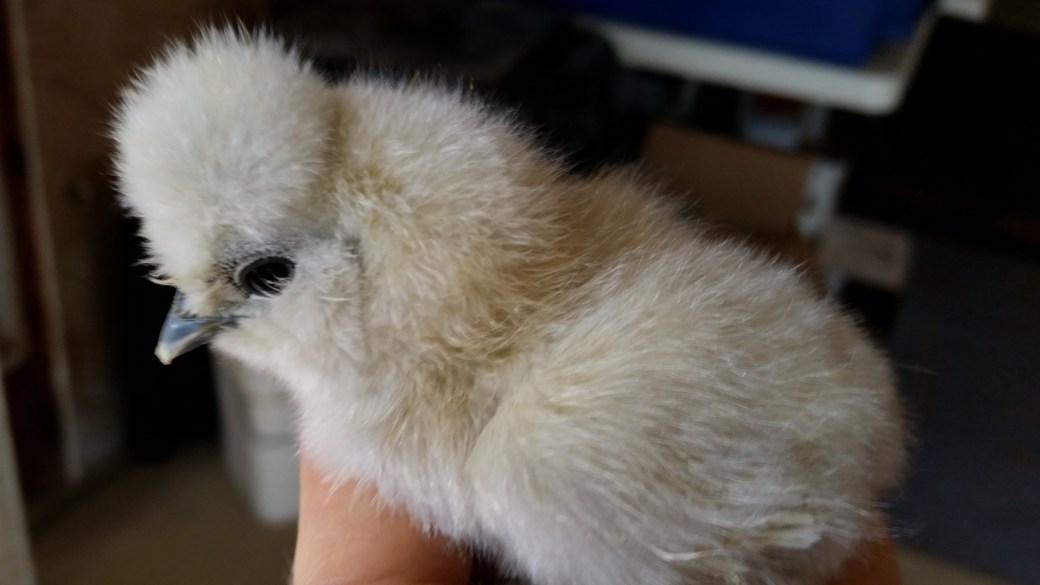
Originally silkies came from China. Marco Polo mentions “furry chickens” when he explored that area in the 1200s. Coming from the mountains of China, silkies do very well in cold weather. They have been very hardy in our Minnesota winters.
The variety of colors in the silkie world is what keeps people coming back for more. The Standard of Perfection lists White, Black, Buff, Blue, Splash, Gray, Partridge, Self Blue and Paint. These are the colors of silkies that can be shown in a poultry show. Breeders also have non accepted colors such as Red, Porcelain and Cuckoo. I find that people enjoy collecting different colored silkies for their backyard flocks. When buying chicks, my customers often ask for one of each color.
I enjoy showing silkies in poultry shows. One of the experiences you can’t miss is giving your silkie a bath and then fluffing them up with a hair dryer. You can trim their toenails and beaks and give them a true spa treatment. Make sure that your silkie can always see by trimming the feathers above and below their eyes.
One thing I have learned over the years is that silkie chicks can be fragile. I always recommend adding vitamins and electrolytes to their water. Adult silkies should be given a feed that is higher in protein such as a gamebird feed of at least 20% protein. Because of their vaulted skulls, silkies are prone to head injuries. Their gentle, quiet nature can also make them sitting ducks for predators. They do need to be watched when they are free ranging. They don’t bother other breeds but do tend to be picked on in a mixed flock due to their gentle nature.
Silkies are friendly and the perfect pet for families with young children. Raising chicks from a young age will increase your bird’s attachment to you. Treats are always welcome and are a great way to bond with your silkie. Gentle silkies are sweet and loving. I find them to be the perfect pet chicken.
For tips and tricks for raising outstanding silkies check out our Chicken Learning Center at VJPPoultry.com . VJP Poultry is an NPIP and state inspected hatchery located 30 miles north of St. Paul. We hatch out silkies all year long so we always have stock available. Like us on Facebook to get weekly updates on what we currently have for sale.
Victoria J. Peterson

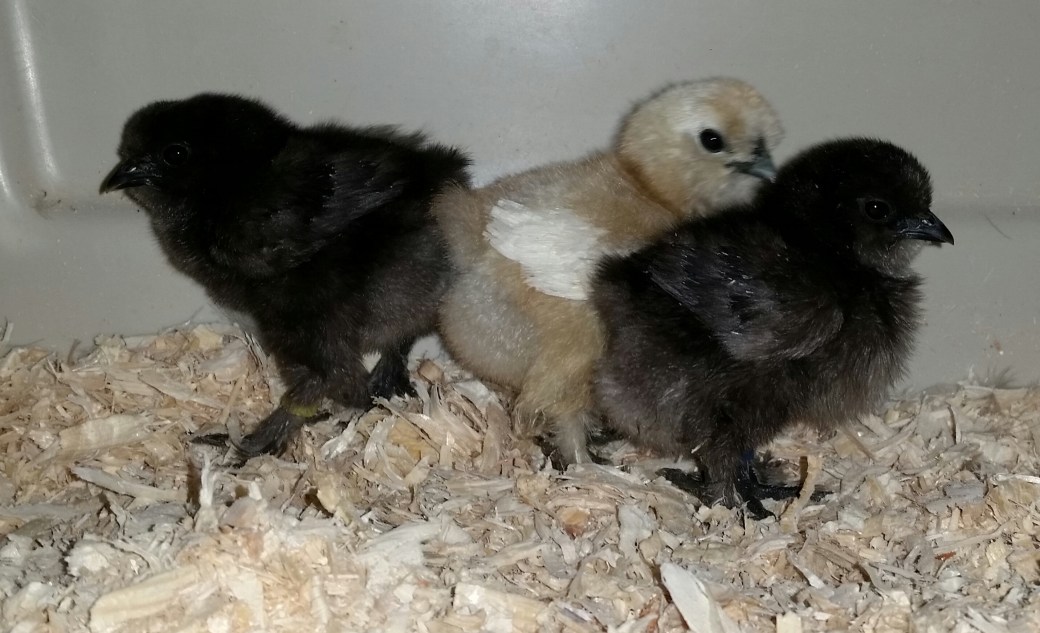 Silkie chicks are known to be very difficult to sex at a young age. An Avian DNA sex test is a scientific way to determine the gender of your baby chick before you become too emotionally attached to it knowing that if it is a rooster you will not be able to keep it depending on where you live.
Silkie chicks are known to be very difficult to sex at a young age. An Avian DNA sex test is a scientific way to determine the gender of your baby chick before you become too emotionally attached to it knowing that if it is a rooster you will not be able to keep it depending on where you live.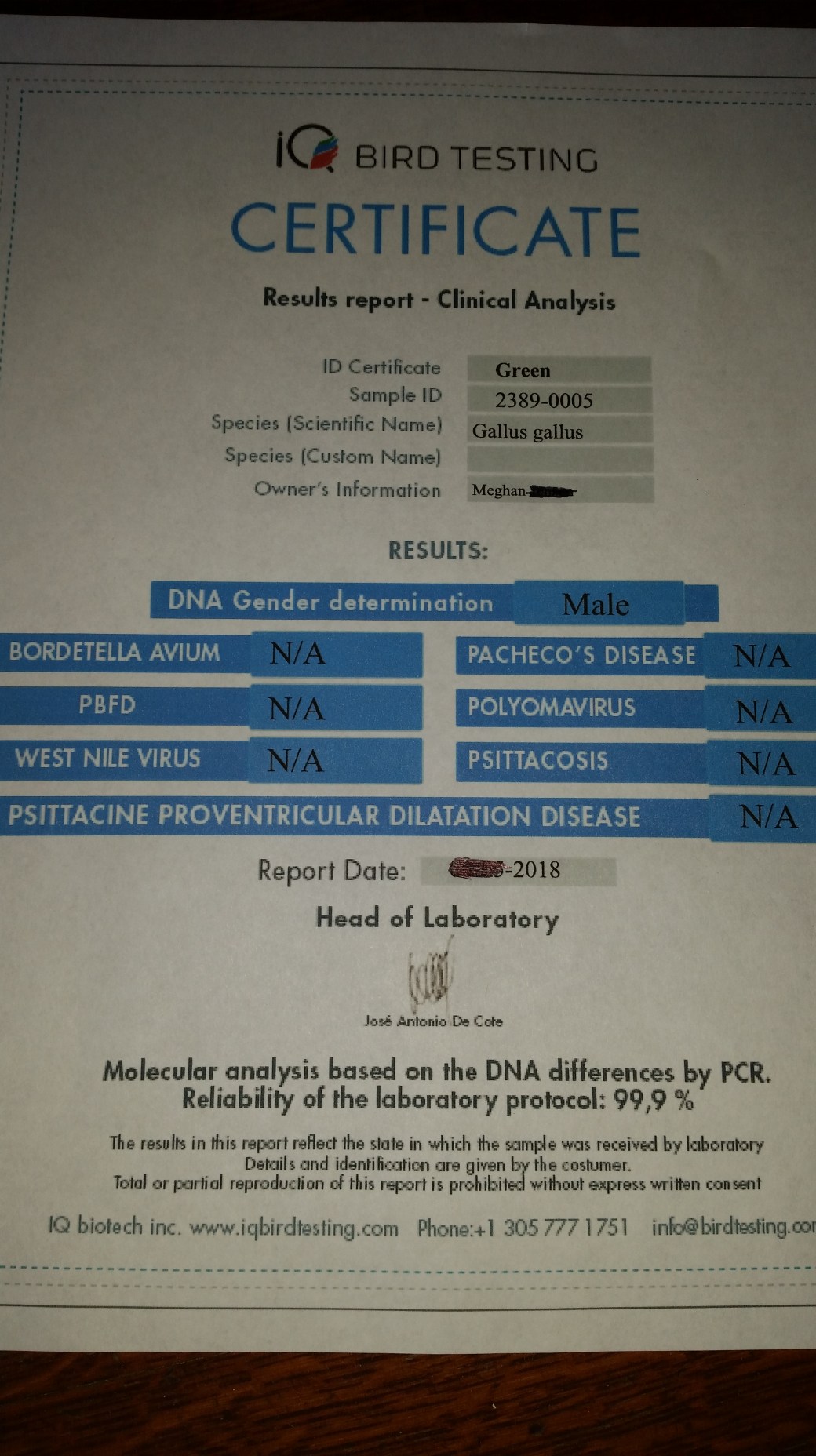
 Silkies are among the hardest breed of chickens to sex at a young age. The old adage that you can’t tell them apart until they crow or lay an egg has a lot of truth in it. I have found that certain weeks of age are easier than others for telling which are boys and which are girls.
Silkies are among the hardest breed of chickens to sex at a young age. The old adage that you can’t tell them apart until they crow or lay an egg has a lot of truth in it. I have found that certain weeks of age are easier than others for telling which are boys and which are girls.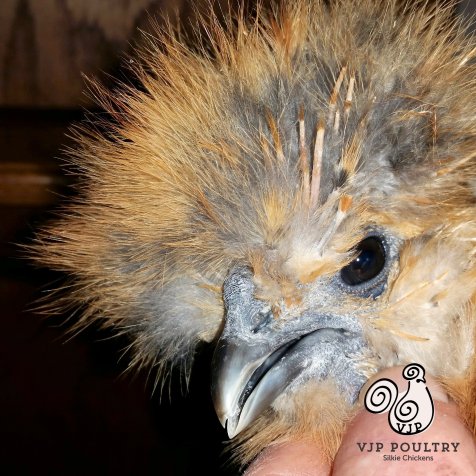
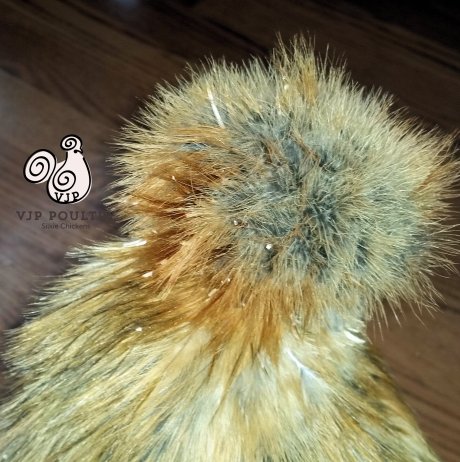
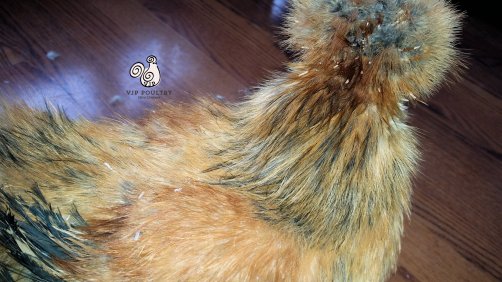
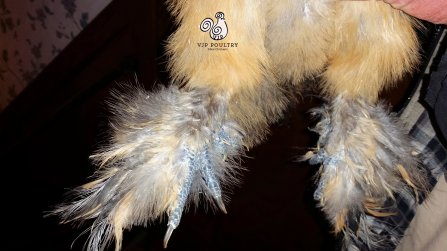
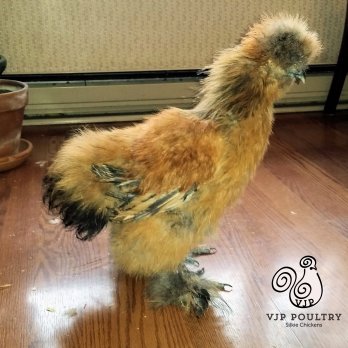
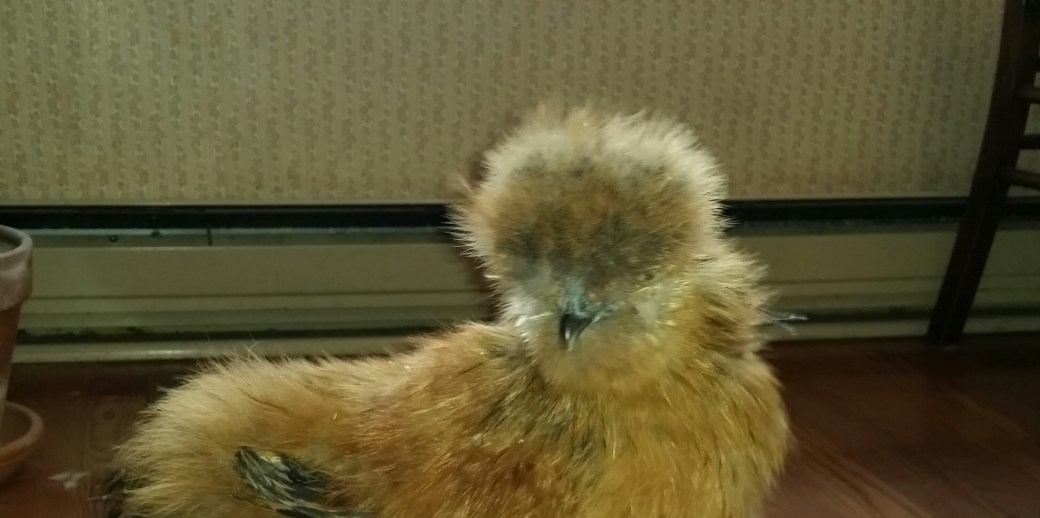
 Silkies have always been known as a breed of chicken that is extremely difficult to sex. Most people will tell you that you won’t know the sex of your silkie until it either crows or lays an egg. I am going to give you some helpful hints and tricks to improve your chances of getting the sex of silkie chick that you desire.
Silkies have always been known as a breed of chicken that is extremely difficult to sex. Most people will tell you that you won’t know the sex of your silkie until it either crows or lays an egg. I am going to give you some helpful hints and tricks to improve your chances of getting the sex of silkie chick that you desire.